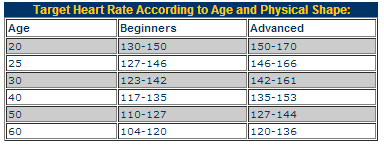Heart Rate Monitors
Our guide takes you through the basic features of heart monitors, so you can choose one that's right for you.
How To Buy A Heart Rate Monitor
A real advance in exercising has been made through the use of either portable or built-in heart monitors. These monitors, which accurately measure your heart rate during exercise, allow you to adjust your workout to meet your goals.
How They Work
- The monitor usually attaches to your chest
- The monitor continuously measures your heart rate during your workout and relays it to the receiver
- Many versions will provide indications--usually a beeping sound--when you go either above or below your targeted heart rate zone
- Some versions will also store your heart rate information for future reference
Benefits of Heart Rate Monitors
- Help develop a more effective training program
- Alert you if you are working outside (too high or too low) of your target rate, or will speed up or slow down the exercise machine to keep you on target
- Since the two main causes of an improper workout are either working too hard or not hard enough, the monitor can help keep you focused
Contact Monitors
- Contact monitors are either held in your hand or strapped around your chest
- They measure your heart rate by detecting the impulses from your heart as you exercise and display the rate on a monitor on your wrist
- These are more accurate than pulse rate monitors that are built into some cardio machines because they are attached directly to the body and more closely and continuously monitor the heart rate
Monitoring Your Workout
- The purpose of a heart rate monitor is to help you achieve and maintain your targeted heart rate zone during your workout
- This zone assures the most effective cardiovascular workout
- Follow the guide below to indicate your target heart rate according to your age and physical shape

